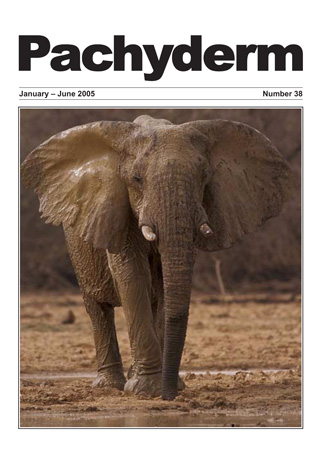Systematic recording of human-elephant conflict: a case study in south-eastern Tanzania
DOI:
https://doi.org/10.69649/pachyderm.v38i1.1218Abstract
A standardized data collection system devised to record and assess human-elephant conflict was used in subsistence agricultural areas to the east of Selous GR in Tanzania. 'Nine enumerators were recruited, trained and supervised to collect primary data on elephant damage incidents in 38 rural villages widely spaced throughout an area of 30000sq km. Reviews results from the first year (July 2003-June 2004) of a proposed three year study. 1239 incidents occurred of which 973 were assessed as crop raiding. Sixteen categories of food crops were damaged, representing loss to both wet and dry season produce. Mixed herds were the most common raiders in both wet and dry seasons (56% and 63% respectively), lone bulls were second (22%) in the wet season, with bull groups (22%) playing this role in the dry season. Elephants killed 2 people, and people killed 25 elephants. Initial study year results already serve to illustrate the utility and cost-effectiveness of simple, inexpensive recording schemes, operated principally by people within affected communities and producing rapid results relevant to local wildlife management and community-based observation. The authors note results from the initial year of the project 'have successfully tested the principle and logistics of collecting primary data through an independent third party', in this case the village level enumerators, 'rather than from affected people's verbal accounts or from employees of a national wildlife authority'. In both these latter cases data are often inconsistent or biased. (Hoare, 2001) The authors conclude that the study probably operated over the largest area ever covered by a wildlife conflict reporting scheme of its kind. In much of the area villages are widely spaced and the proportion of the area actually occupied and cultivated is very small (1%) making the probability of human-elephant conflict slight.
Downloads
Published
How to Cite
Issue
Section
License
Copyright (c) 2005 Cyprian Malima, Richard E. Hoare, J. Julian Blanc

This work is licensed under a Creative Commons Attribution-NonCommercial 4.0 International License.




